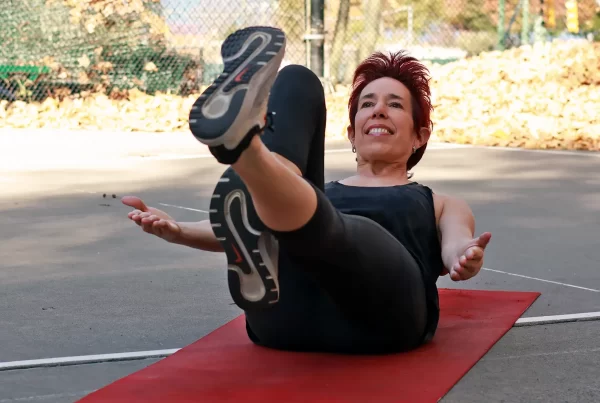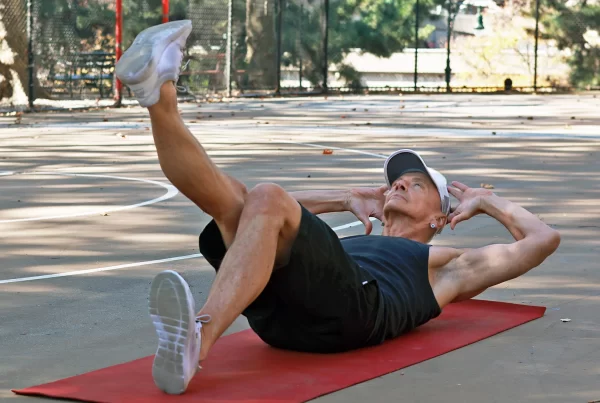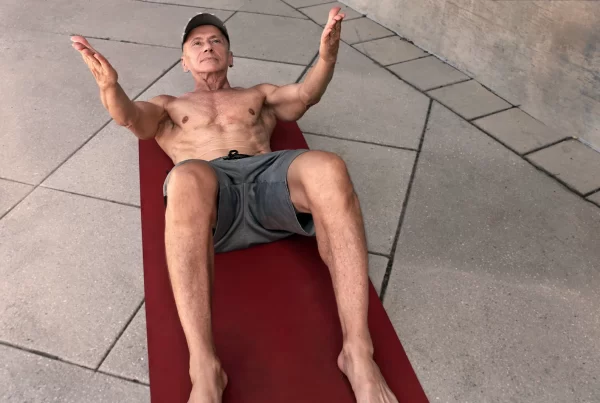Dynamic
Warm Up

Ready to Elevate Your Workout?
Here’s How a Dynamic Warm Up Can Make All the Difference!
Sure, technique, power, speed, and strength are crucial for boosting your fitness, but there’s one often-overlooked element that can make all the difference: a proper warm up. Let’s be honest, we’re all guilty of wanting to dive right into our workout, especially when time is tight. But skipping that warm up, especially before a tough session, can seriously impact not just your physical performance but also your mindset.
Think of a warm up as your body’s dress rehearsal. It’s your chance to get everything in sync before the real action starts. A good warm up gradually ramps up your heart rate, breathing, and body core temperature while loosening up your muscles and joints. It helps you move better, react faster, and feel more in tune with your body. Plus, it gets your mind in the zone, ready to crush whatever workout you’ve planned.
Research shows that a dynamic warm up, one that involves continuous, sports-specific movements, not only boosts your performance during the workout but also lowers your risk of injury. So why not give your body the prep time it deserves?
So, what exactly is a dynamic warm up?
Think of it as movement prep for your body. A dynamic warm up is a series of functional, active movements designed to get your muscles, connective tissue, and joints ready for action. The goal is to restore your flexibility, increase your range of motion, and set the stage for a killer workout. Unlike static stretching (which you should save for after your workout), a dynamic warm up is all about keeping things moving and mimicking the actions you’re about to do.
It’s like a sneak preview of the workout itself, helping your body get into the groove and perform at its best. And if you’re still unsure what that looks like or where to start, don’t worry, we’ve got you covered. Check out our video below for some quick inspiration and ideas to get you warmed up the right way.
Benefits of a Dynamic Warm Up
#1 Increase Heart Rate, Blood Flow, and Body Core Temperature
Right now, as you’re reading this, your blood flow to skeletal muscles is relatively low, with only about 15% to 20% of your blood circulating there. Most of the capillaries in those muscles are closed. But after just 10 to 12 minutes of a full-body dynamic warm up (like the one we showed you earlier), those capillaries open up, and blood flow to your muscles jumps up to 70% to 75%.
Why does this matter? Increased blood flow raises your body temperature, causing hemoglobin in your blood to release oxygen more easily. More oxygen in your muscles means better performance. Plus, the rise in body temperature leads to quicker muscle contractions and relaxations, an increase in muscle metabolism, and faster nerve transmission. In short, your muscles work more efficiently. And as your heart rate goes up to pump that blood around, your body also becomes better at removing carbon dioxide and other waste products, reducing the risk of soreness the next day.
#2 Injury Prevention
It’s tricky to run scientific studies on injury prevention—most athletes aren’t keen on risking muscle tears just to prove a point. However, studies on animals have shown that warmed-up muscles require more force and stretching to tear compared to cold muscles. This aligns with what many athletes have experienced: muscle tears are more likely when muscles are cold.
There have been human studies looking at the effects of sudden, high-intensity exercise on the heart. One study found that even healthy, fit men showed abnormal ECG changes due to low blood supply to the heart during intense exercise without a warm up. Bottom line? If you want to protect your heart and muscles, warm up!
#3 Enhance Muscular Performance and Power
Multiple studies highlight that a dynamic warm up boosts muscular performance and power. Those who warm up can lift more weight and perform better overall compared to those who skip it. So, if building stronger muscles and improving athletic performance is your goal, a comprehensive dynamic warm up is a must.

#4 Loosen Up Joints
While muscles often get all the attention, your joints play a crucial role in your workout success. A good warm up loosens up your joints and increases your range of motion. Warm, well-lubricated joints mean less stress on them and your tendons, preparing your body for sudden or explosive movements. This reduces the risk of injury and allows you to perform with greater power. Plus, when your joints are warmed up, you can move through a full range of motion, leading to better results.
#5 Induce Hormonal Changes
As you warm up, your body ramps up the production of several hormones, including epinephrine and cortisol, which are key for energy production. These hormones make fatty acids and carbohydrates more readily available, giving you more energy for your workout. And you know what that means: more energy, better workout, amazing results.
#6 Activate the Central Nervous System
Warming up signals to your body that it’s time for action, which activates your central nervous system. This improves your reaction time, skill accuracy, and coordination, all of which contribute to better performance during your workout.
#7 Prepare Yourself Mentally
A dynamic warm up isn’t just about your body—it’s about your mind, too. It helps you transition from whatever you were doing before to your workout, getting your mind ready for the challenges ahead. When your mind is focused and prepared, your skill, technique, and coordination improve, making your workout more effective and reducing the risk of injury. Plus, taking a moment to visualize acing your workout can dramatically boost your performance when it’s time to get moving.
Conclusion
Take your time and spend 20 to 30 minutes warming up to give your body the chance to gradually get ready for your workout and to prepare yourself mentally. You might wonder if a warm up is really necessary—the short answer is YES. If you want to perform at your best and reduce the risk of injury, a proper warm up is essential. Just keep it functional and tailor it to the workout you’re about to do. Remember, the more intense your workout, the more time you should spend warming up.




